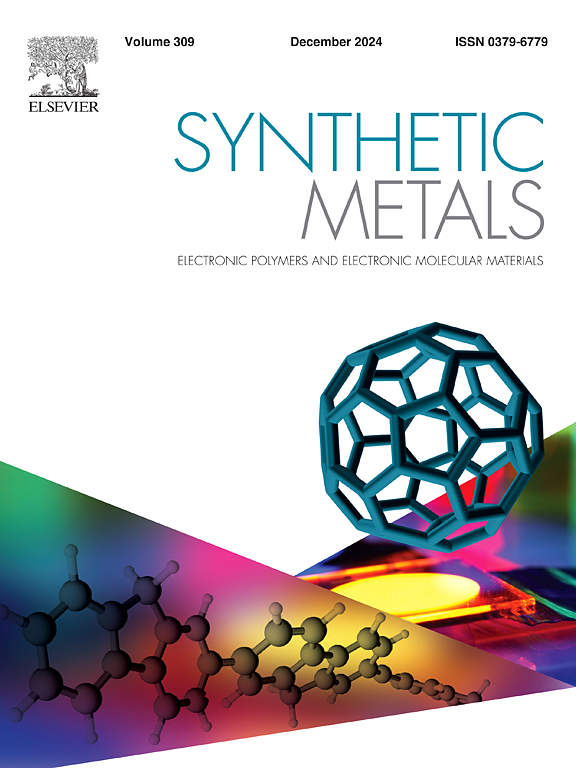A high-work function n-type thin film modifies the MoO3/anode interface for the efficiency increase of inverted organic solar cell
IF 4.6
3区 材料科学
Q2 MATERIALS SCIENCE, MULTIDISCIPLINARY
引用次数: 0
Abstract
Inverted organic solar cells (OSCs) have been fabricated using two high-work function n-type materials, MoO3 and 1,4,5,8,9,11-hexaazatriphenylene hexacarbonitrile (HAT-CN), as anode-modifying layers. The device with 5 nm MoO3/Al presents shows higher open-circuit voltage but smaller short-circuit current density than the one using 10 nm HAT-CN/Al; the efficiency (12.23 %) of the former is slightly higher than that (11.98 %) of the latter. The device with 5 nm HAT-CN/5 nm MoO3/Al offers an efficiency of 11.44 %, smaller than that of the device with 10 nm HAT-CN/Al, which indicates that the MoO3 intervention does not improve the HAT-CN/anode interface. However, the device with 5 nm MoO3/2 nm HAT-CN/Al shows an efficiency of 13.98 %, markedly higher than that of the device with 5 nm MoO3/Al, implying that the thin HAT-CN interlayer effectively modifies the MoO3/anode interface. The 5 nm MoO3/2 nm HAT-CN/Al enables higher efficiency than the 5 nm HAT-CN/5 nm MoO3/Al and 10 nm HAT-CN/Al, indicating the direct contact of active layer with higher-work function anode-modifying layer underlies the efficiency improvement of inverted device. The current research is helpful to improve the performance of inverted OSCs.
高功函数n型薄膜修饰了MoO3/阳极界面,提高了倒置有机太阳能电池的效率
采用两种高功函数n型材料MoO3和1,4,5,8,9,11-六氮杂苯六腈(HAT-CN)作为阳极修饰层制备了倒置有机太阳能电池(OSCs)。与使用10 nm的HAT-CN/Al相比,使用5 nm的MoO3/Al器件具有更高的开路电压和更小的短路电流密度;前者的效率(12.23 %)略高于后者(11.98 %)。5 nm HAT-CN/5 nm MoO3/Al器件的效率为11.44 %,低于10 nm HAT-CN/Al器件的效率,这表明MoO3的干预并没有改善HAT-CN/阳极界面。然而,5 nm的MoO3/2 nm的HAT-CN/Al器件的效率为13.98 %,明显高于5 nm的MoO3/Al器件,这表明薄的HAT-CN中间层有效地改变了MoO3/阳极界面。5 nm的MoO3/2 nm的HAT-CN/Al比5 nm的HAT-CN/5 nm的MoO3/Al和10 nm的HAT-CN/Al具有更高的效率,表明有源层与高功函数阳极修饰层的直接接触是提高倒置器件效率的基础。本文的研究有助于提高反向osc的性能。
本文章由计算机程序翻译,如有差异,请以英文原文为准。
求助全文
约1分钟内获得全文
求助全文
来源期刊

Synthetic Metals
工程技术-材料科学:综合
CiteScore
8.30
自引率
4.50%
发文量
189
审稿时长
33 days
期刊介绍:
This journal is an international medium for the rapid publication of original research papers, short communications and subject reviews dealing with research on and applications of electronic polymers and electronic molecular materials including novel carbon architectures. These functional materials have the properties of metals, semiconductors or magnets and are distinguishable from elemental and alloy/binary metals, semiconductors and magnets.
 求助内容:
求助内容: 应助结果提醒方式:
应助结果提醒方式:


